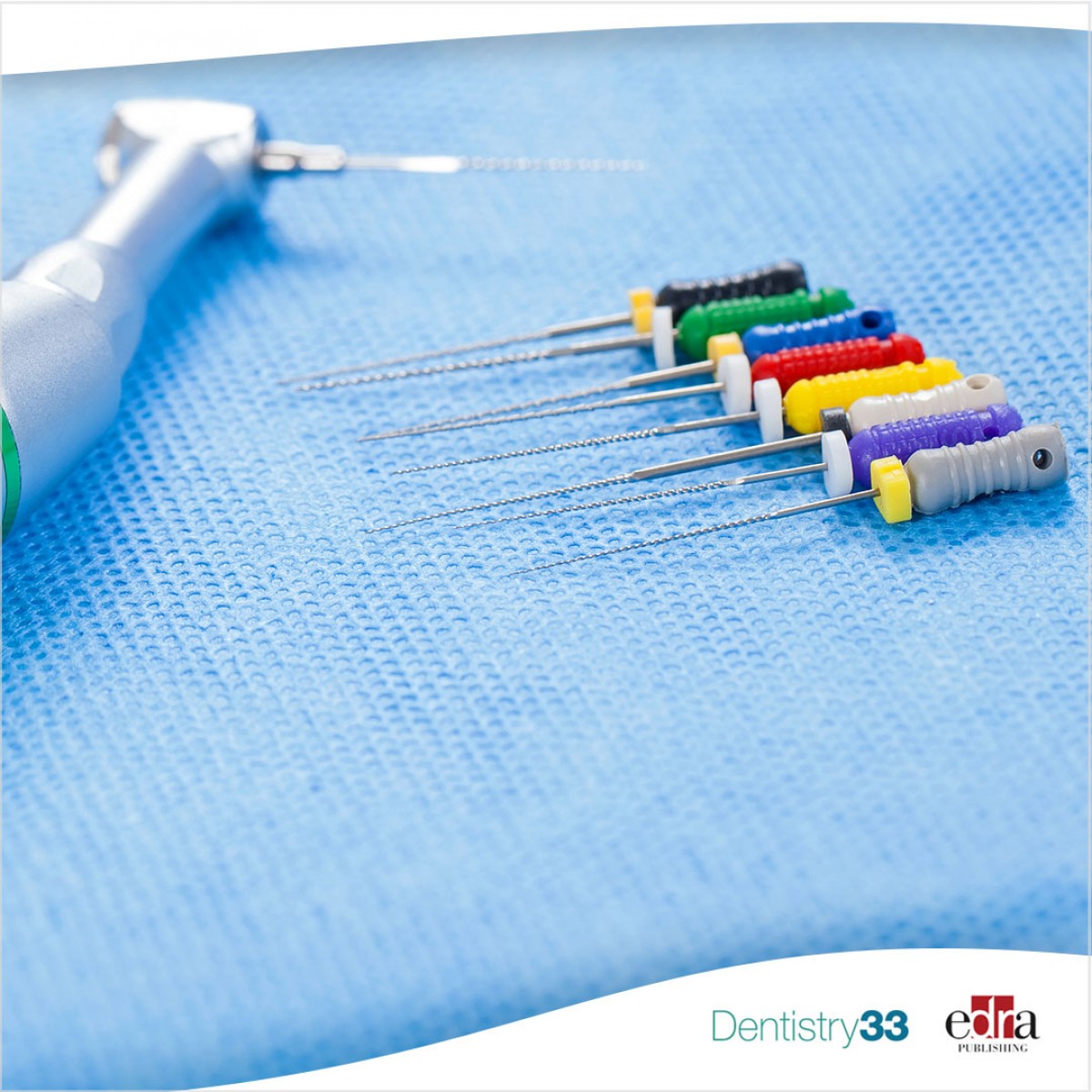
Root canal filling with 3D printing of teeth with internal perforating resorption
Internal root resorption originates from an inflammatory reaction, initiated by damage to the odontoblast layer and non-mineralized predentin, which results in exposure of mineralized dentin to the pulp tissue, migration of odontoclasts to the lesion site, and resorption of the walls of the root canal. Starting from the pulp, if untreated, resorption progresses towards the dentin and root cement. This can lead to perforation of the root wall and communication of the canal with the periodontal ligament and alveolar bone.
Once perforating internal resorption (PIR) has been diagnosed, a treatment is recommended that involves a root canal filling that fills the root canals and also the PIR area in a three-dimensional way, avoiding spaces between the filling material and the dentin wall. The materials responsible for closing the PIRs must have biological and bioactive properties, stimulating the healing of the periapical tissues. In the literature there are two techniques proposed for filling teeth with PIR: hybrid and incremental. The hybrid obturation technique involves filling the apical root canal with gutta-percha and root canal cement, while the PIR area is sealed using a hydraulic repair cement. The incremental technique, however, involves filling the root canal and the PIR area using hydraulic repair cement assisted by manual capacitors.
Materials and methods
In an in vitro study, published in the Journal of Endodontics, the authors evaluated the filling capacity using two different obturation techniques in 3D printed teeth with perforating internal resorption (PIR). A maxillary central incisor was instrumented and scanned using micro-computed tomography (micro-CT). The 3D model was exported in stereolithographic format and, with the help of the OrtogOnBlender software, a PIR was designed in the middle third of the root canal.
32 replicas were molded in resin and distributed into 4 groups (n = 8) based on the method used for the obturation technique and based on the material used. In two groups the hybrid technique was used, in one group Bio-C Sealer (BCS)/gutta percha (GP) + Bio-C Repair (BCR) was used and in the other group BioRoot (BR)/gutta percha (GP) + Biodentine (BD). In the other two groups the incremental technique was applied: in one group Bio-C Repair (BCR) was used and in the other Biodentine (BD). Post-obturation micro-CT was performed to measure the percent volume of voids and laser confocal microscopy was performed to measure the surface roughness (μm) of the repair cements. Data were compared using ANOVA and the Kruskal-Wallis test.
Results
Regarding the filling volume in the apical third, the BCS/GP+BCR (89.70±5.15), BR/GP+BD (87.70±8.43) and BCR (84.20±9) groups .00) showed the highest percentages compared to the BD group (69.70±6.88) (P <0.05). In the area of internal resorption, BCS/GP+BCR (96.00±2.64) and BCR groups (95.30±2.93) showed the highest percentages compared to BR/GP+BD (91.50 ±1.35) (P <0.05).
Regarding the quality of filling of the perforation area, the BCR group showed better results than the BD group (P < 0.001). Regarding roughness, the BCR group (1.66±0.65) showed lower surface roughness than the BD group (2.51±0.89) (P<0.05).
Conclusions
From the data of this study, which must be confirmed in other similar works, it can be concluded that the capacity and quality of root canal filling of teeth with PIR are better if the incremental technique with Bio-C Repair and the hybrid technique with Bio-C Sealer/gutta percha+using Bio-C for perforation repair.
 Related articles
Related articles
Endodontics 18 August 2025
Factors influencing the long-term results of endodontic treatment: a review of the literature
The purpose of this review of the literature is to examine the factors and their influence on the outcome of endodontic treatments, and also to attempt to have an authors’ consensus concerning the...
Endodontics 03 June 2025
This study investigated the incidence of hand and rotary instrument separation (IS) in the endodontics graduate program at the University of Pennsylvania between 2000 and 2004.
Pediatric dentistry 25 April 2025
Forensic dentistry is the legal field of dentistry which analyses dental evidence in the interest of justice.
Endodontics 18 December 2024
In Endodontics, a complete chemo-mechanical cleansing of the root canal system is essential to achieving success, which is gained through adequate tridimensional obturation of the endodontic space.
Editorials 16 July 2024
here are two words that can frighten people, even those who aren’t normally scared of the dentist – “root canal.” The words recall images of a long, intensive procedure that leaves the...
 Read more
Read more
Editorials 10 October 2025
With proud smiles and crisp white coats, ninety-three learners from the DDS Class of 2029 and the International Dentist Pathway Class of 2028 marked the start of their dental careers at the UCSF...
Periodontology 10 October 2025
Continuous professional development (CPD) in Periodontology refers to the overall framework of opportunities that facilitate a life-long learning practice, driven by the learner-practitioner and...
TheraBreath, the #1 alcohol-free mouthwash brand in the U.S.*, has introduced a new line of dentist-formulated, clinically tested toothpastes designed to support professional oral care...
News 10 October 2025
New officers and trustees were installed at the Minnesota Dental Association’s Leadership Conference on September 19 in Minneapolis.
News 10 October 2025
Smartee Denti-Technology today announced that Professor Gang Shen, its Chief Scientist and Executive President of TaiKang ByBo Dental, has once again been named to the World’s Top 2% Scientists...















